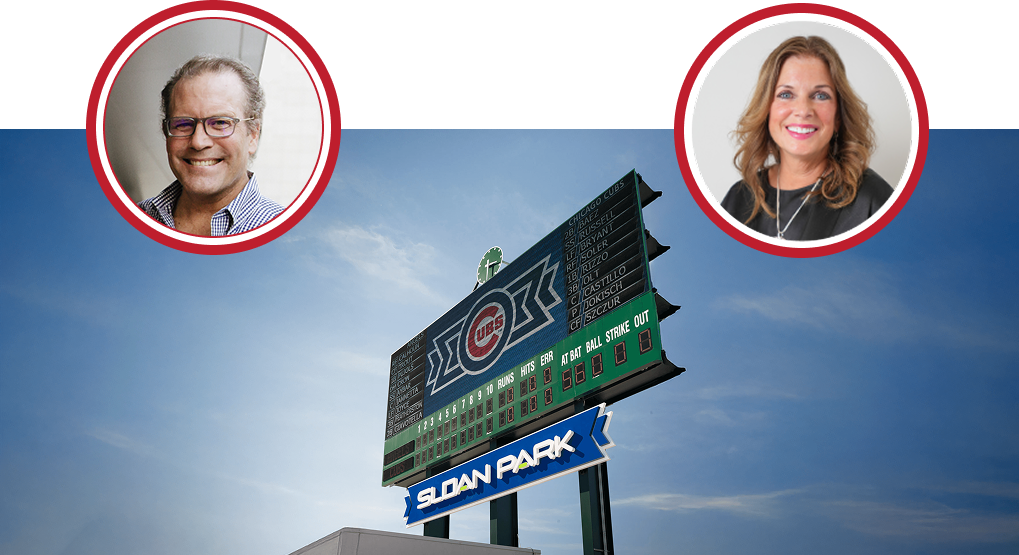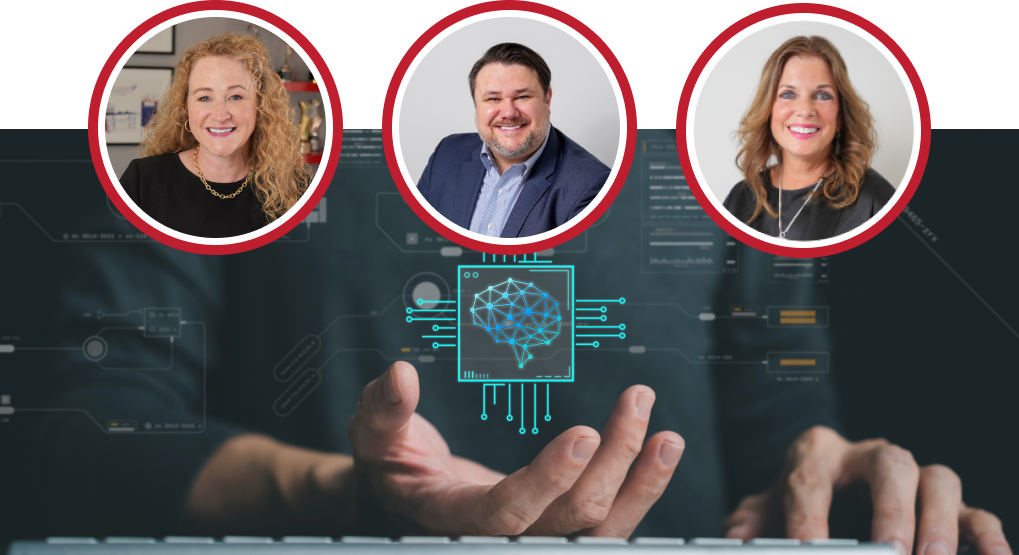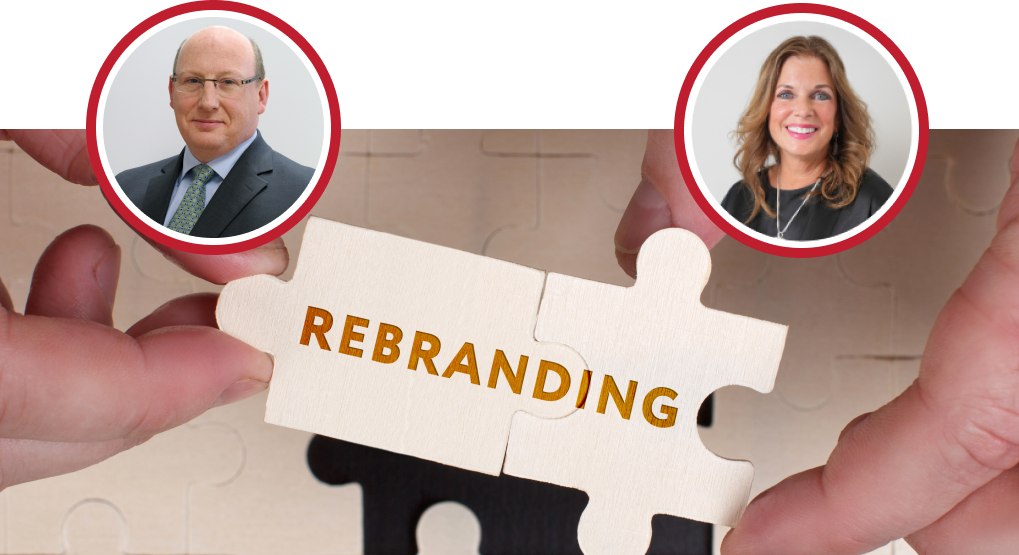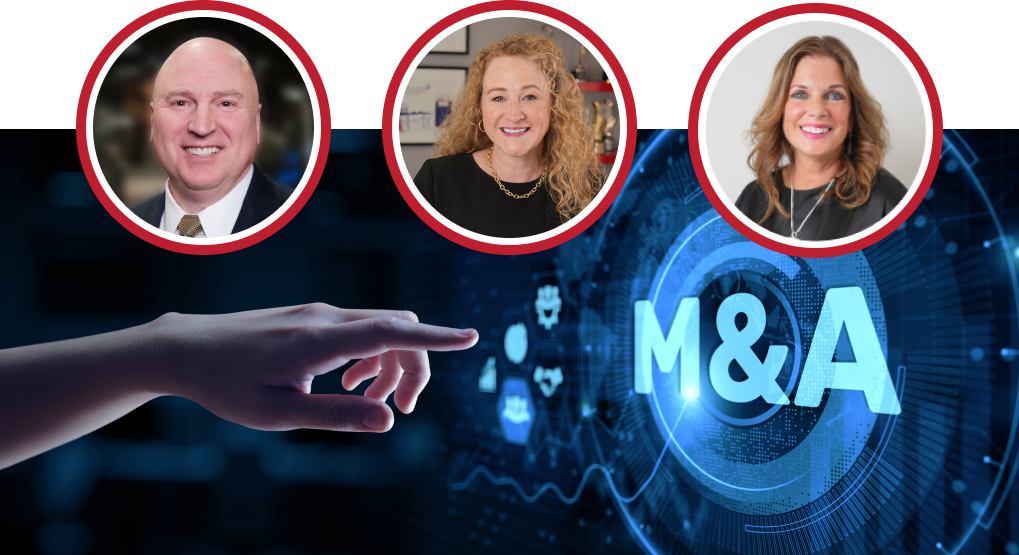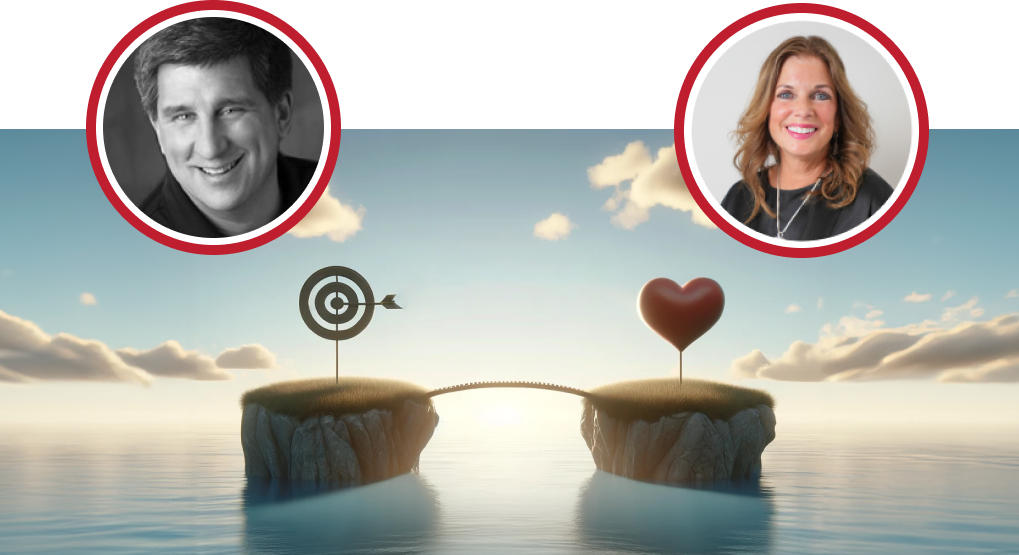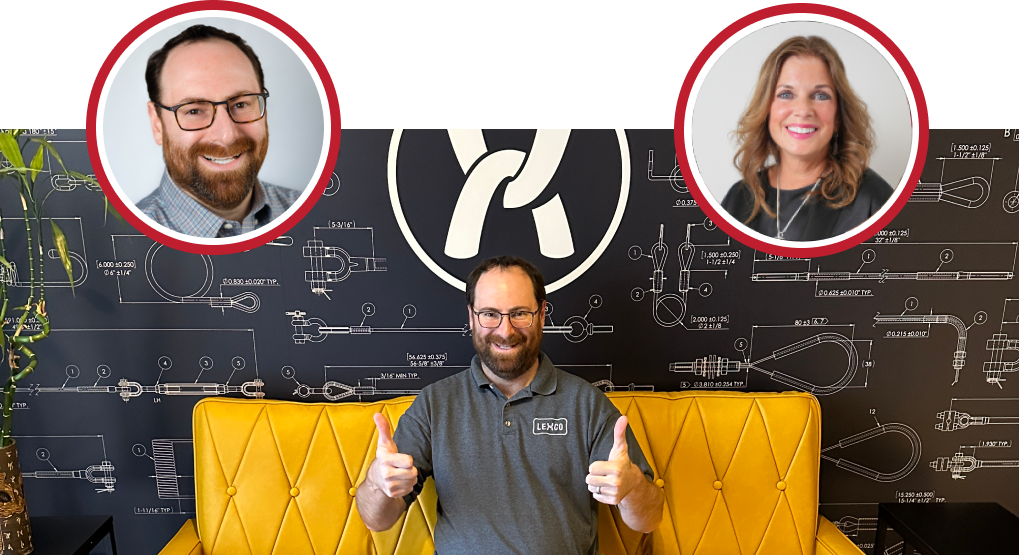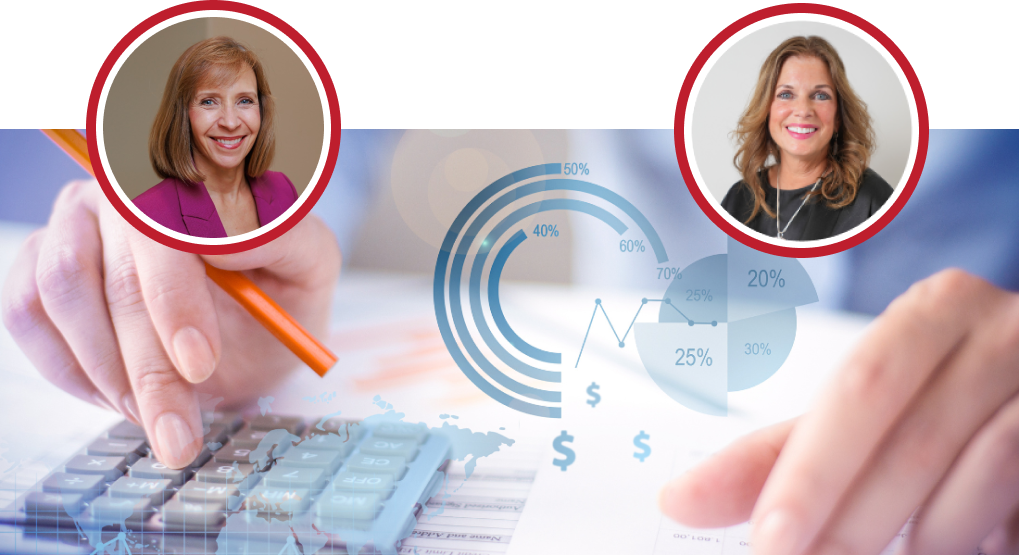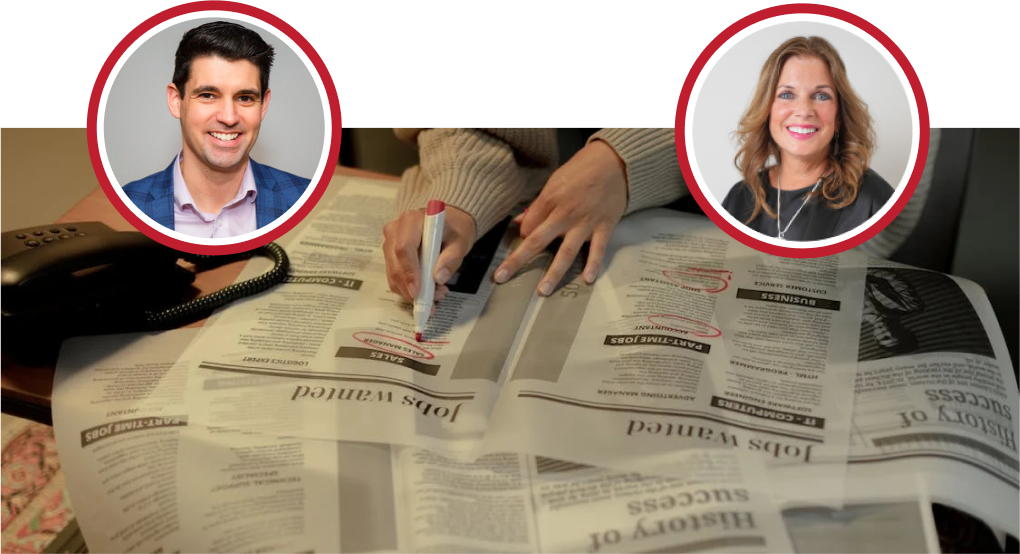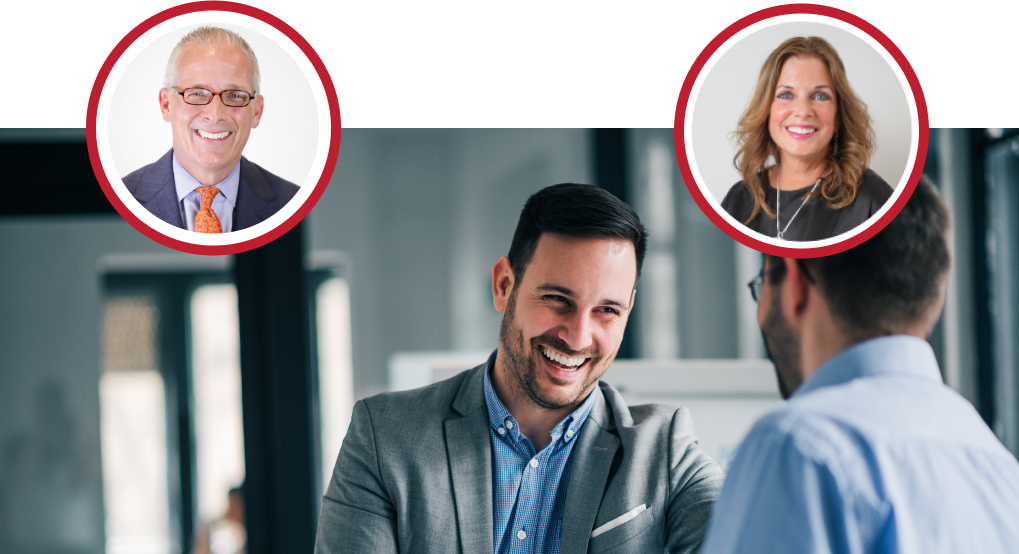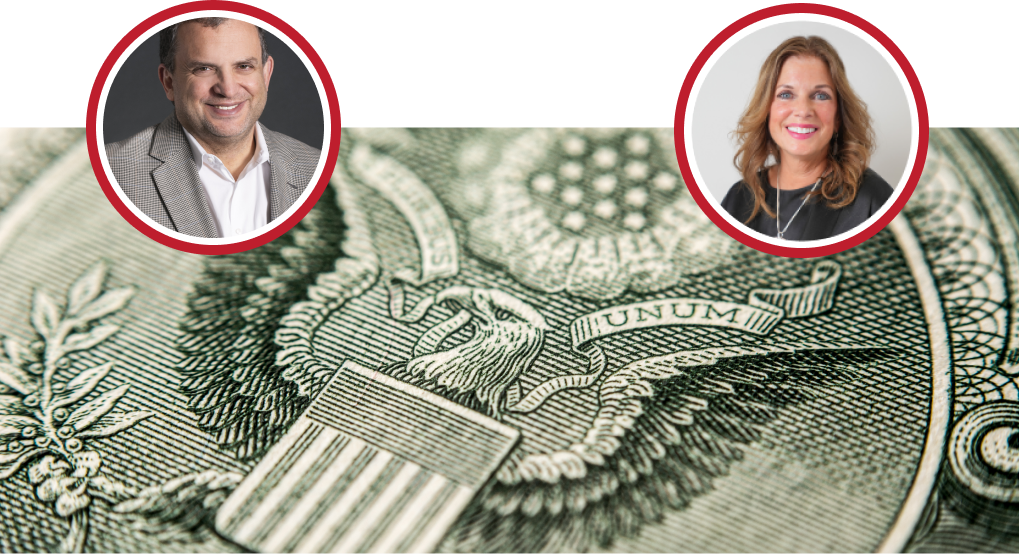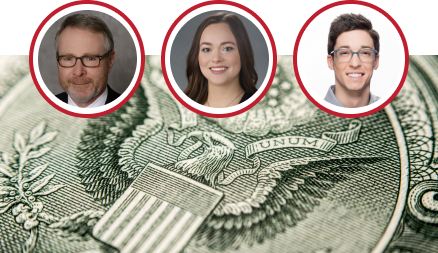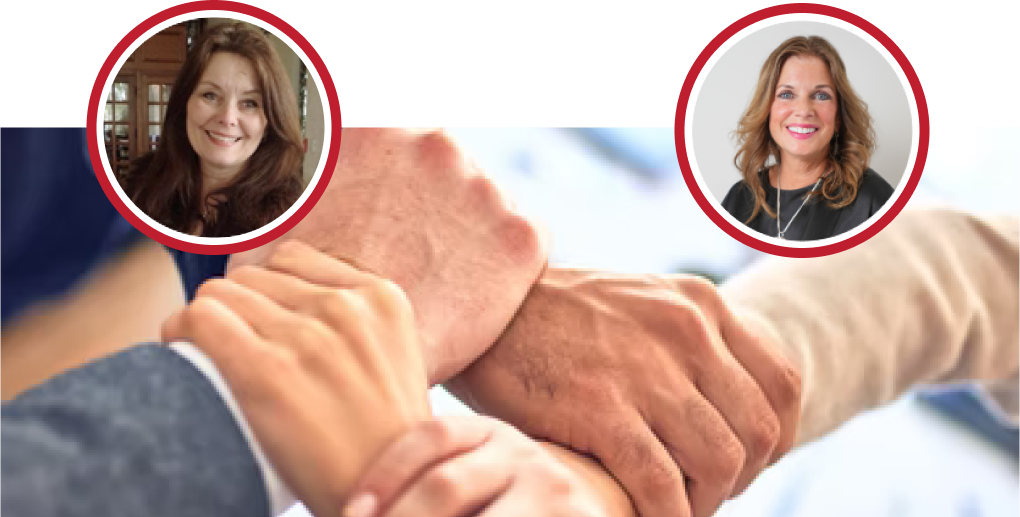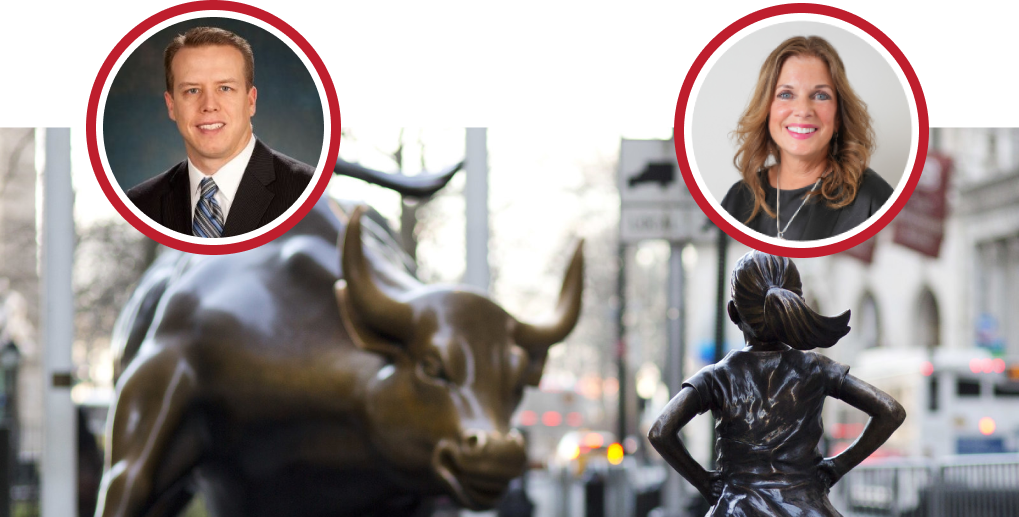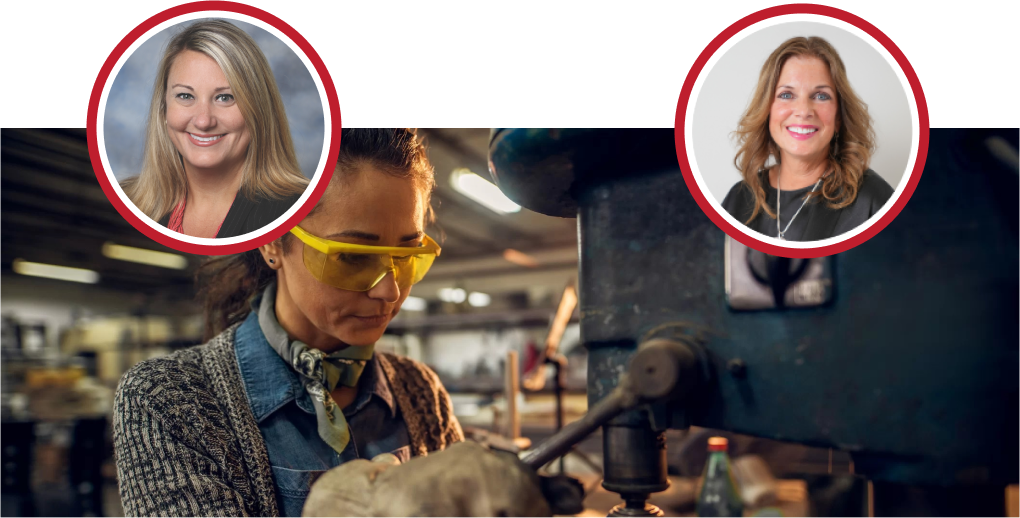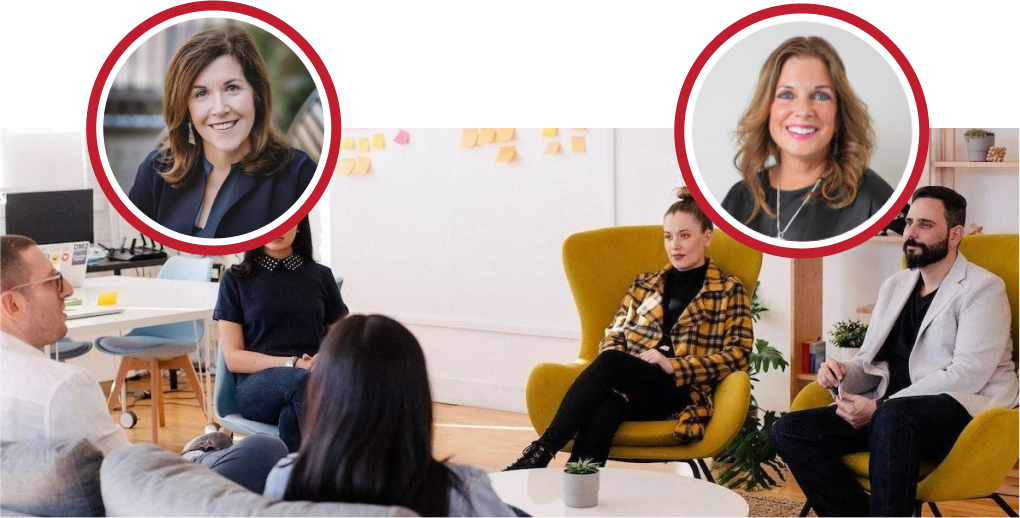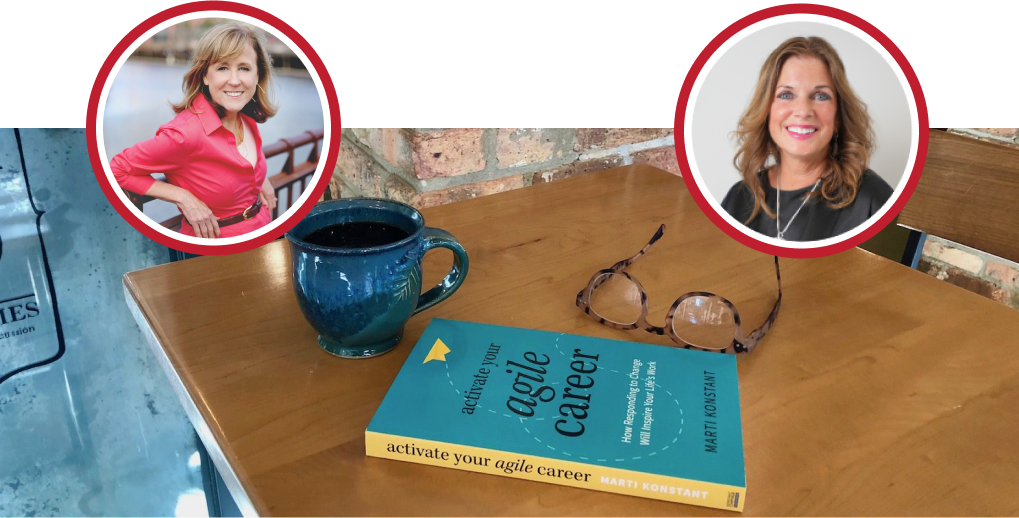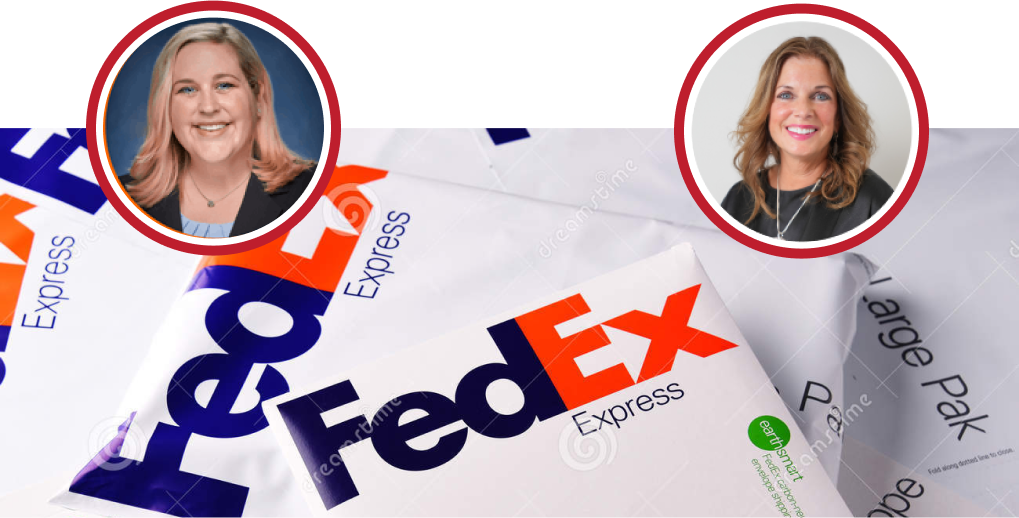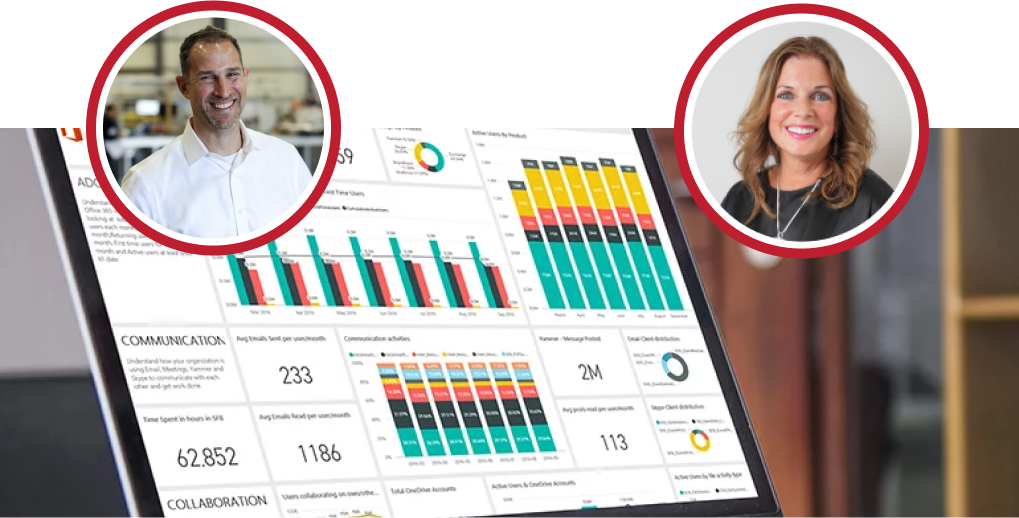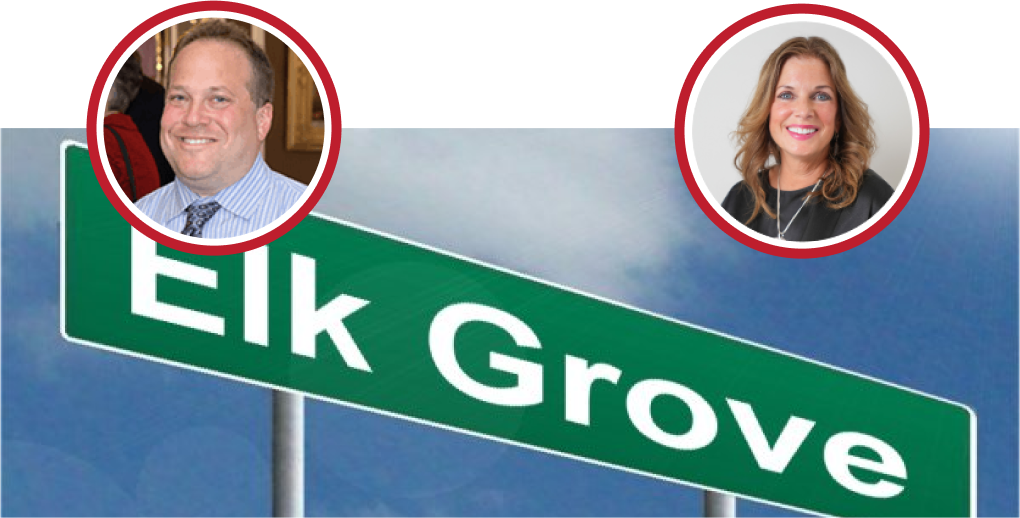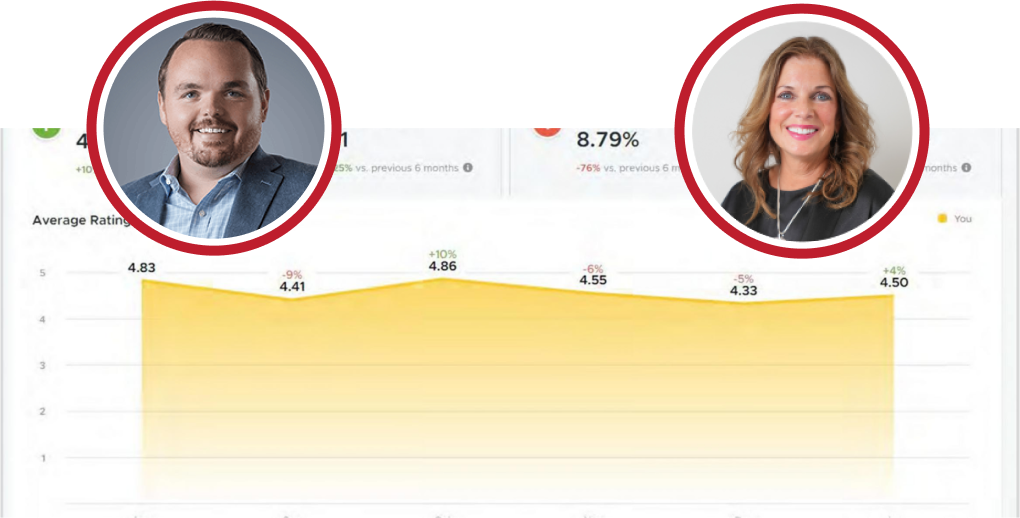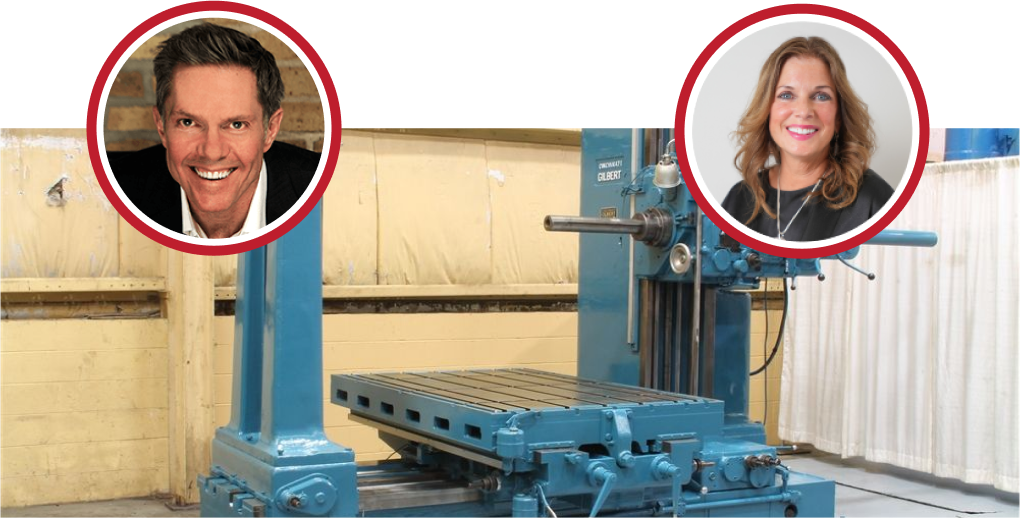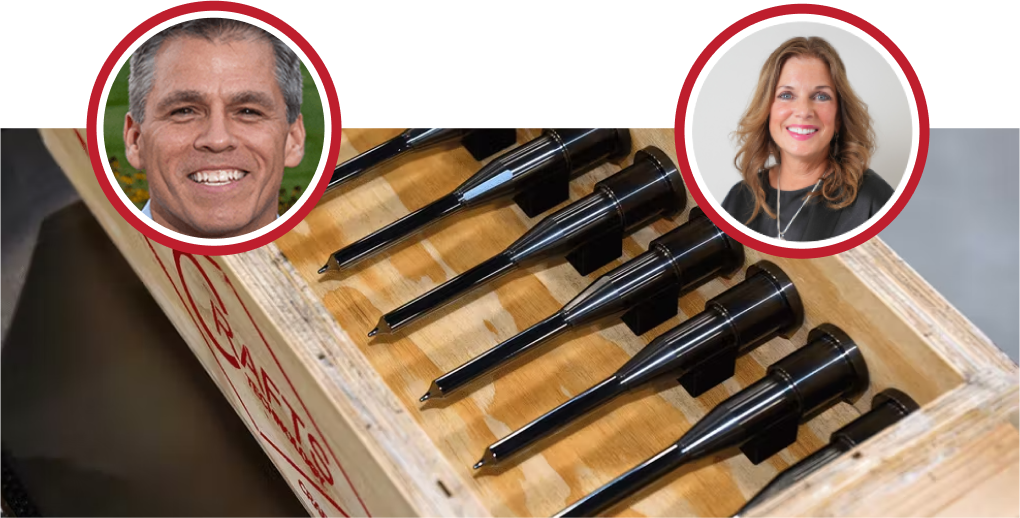Kathy: So, welcome to the April edition of “Business as Unusual” we are going to talk about supercharging growth by maximizing customer lifetime value. Our guest today is Chris Arndt, and we are so pleased to have you all join us on the streaming platforms. We are trying something a little bit new today. So, please bear with us. We hopefully will not have a lot of technical difficulties, but we wanted to let you know that we will be welcoming your questions. So, feel free to add them to the chat. Our team will be standing by to moderate the chat, and we’re gonna get going. So, Chris, welcome; I’m gonna give your bio. So, Chris is the Entrepreneurial CFO; he’s also known as Obra’s Cloud CFO Services Director. Chris brings more than 15 years of experience in the Accounting, Finance, and Wealth Management fields. He specializes in financial statement analysis system implementation, dashboard design, business process improvement, and forecasting but still has the idea or the ability to see the forest through the trees. Chris makes sure that he anticipates and serves his client’s needs by harnessing the latest technology and sharing his Accounting expertise with his clients to ensure the growth of the bottom line just as important, he also enjoys teaching and challenging his team and others to continue their own learning, so they are able to grow professionally. Welcome, Chris; I love to kind of kick things off by having you just tell us what’s not on your bio. Can you share some things about your career journey and your personal?
Chris: Sure, thank you, Kathy, and thanks for the introduction and for having me here and looks like that was quite the mouthful that you had you had to read there on the bio. So, thanks for doing that; we didn’t do your job easily, so some things that aren’t on my bio a little bit about me I’m a Recovering Accountant kind of turned Entrepreneur. So, I’m a CFO who started out on that normal kind of boring path in my career, and then I turned Entrepreneur and founded the Precursor Company to where I work at now which is Orba Cloud CFO Services started that company 11 years ago and as an entrepreneur scaling a business guess whose Accounting was always done last that was ours. So, I’ve walked n the same shoes as many entrepreneurs understand, so when my team and when we’re working with our clients, we provide outsourced accounting and CFO services to middle middle-market companies when we work with them I’m able to kind of speak to that entrepreneurial journey that a lot of our clients have well, I think, Accounting is boring though the financial insight you can get from is awesome and kind of related to the word awesome just know I use that word a lot and everything awesome and so you’ve been warned I’m apologizing now. So, when when when it gets thrown out maybe 10 to 100 times in the next hour, you’ve been warned what else is in my bio; let’s see, I’m a complete data nerd and and and love computer programming and automating things building great spreadsheets and proud dad moment I’ve got two boys my younger my oldest is eight he just recently started really loving Google sheets and doing some scratch coding. So, as a proud data nerd myself, I love seeing that in my son. So, there are a few things about me.
Kathy: Yeah, that is so cool, and I also like to use the word awesome. So, we’re just gonna have to really amp things up today. So, we can really deliver on the awesomeness. So, we always kind of like to start our conversations really around the growth lanes, and I’m so excited to talk about this topic today because customer lifetime value is really a form of organic growth; most businesses get so excited about new customer logos, and I find that it’s much more challenging sometimes to get to think about that get them to think about retention and how to use those metrics. So, I’m really, really thrilled to be able to dig in today on that topic. So, let’s kick things off by having you just start to start the big picture by just helping us better understand what is customer lifetime value it’s often overlooked, but what is, what would you describe it as?
Chris: Sure, and Parker, if you wouldn’t mind going, so on this screen here as far as the growth lanes Kathy, as you touched on, we’re definitely that that top left quadrant. The acquisition is really, I think, what we’re targeting here, and then if you park, you want to jump to the next slide as well. We’ve got some scary formulas here that that don’t worry, we will see; we won’t bore you with those but high-level customer lifetime value is is how much profit do you make from a customer over the time that from when you sign them as a new customer to when ultimately you lose them for whatever reason. So, you kind of there’s a calculation we can talk about going to going in there, but that’s the very high level is what do you profit over a period of time while having that customer.
Kathy: And then also on the screen is CAC, another term that gets thrown out like Customer Acquisition Cost and at a high level what, what it describes? What does that mean?
Chris: Yep, and again at the high level without getting into the actual formula yet high level for cash Customer Acquisition Cost is what do you on average spend to acquire a new customer, so there’s, there are different costs that, that go into that. Whether it’s salespeople, online marketing, offline marketing content, the cost to create content, a lot of costs go in there; it’s sort of you you average it out over how many customers you bring in over a period of time. So, that helps you understand what you are investing in a customer relationship, and then when you put the two together, you’re hoping that investment in a customer relationship over time yields a much larger customer lifetime value which is the profit you get back.
Kathy: So, before we step deeper into the calculations, what are? What’s your experience with customers and having a savviness or leveraging these data points in their business. We are not finding that a lot of our clients or prospects are really paying attention to these numbers specifically. Is that why aren’t people more interested in these in these variables and data points in their KPIs?
Chris: Yeah, I think from what I’ve seen, companies that are backed by professional investors. So, private equity firms or venture capital, I think they typically are tracking these metrics because, by design, their investors are investing in them with the hope that they’re growing and the expectation that they’re growing the business, and that’s what these professional investors want to see, and they know that these two metrics which are very much correlated and you will talk a lot about how one by itself doesn’t mean a lot but together it makes sense they know that if you’re trying to grow and scale a business these are probably the most most important metrics to track now as far as other companies that maybe aren’t backed by professional investors. I think from what I’ve seen; these businesses have grown; the founders, the owners, and CEOs know they want to grow, but you get caught up in life, and there’s, and there are fire drills, and you’re always trying to put the next one out, and I mentioned earlier how when I was growing and scaling my company. I didn’t even do my own Accounting much less track metrics like this so, so i get that it’s easy to kind of put it on the back burner but it’s very it’s something that every business should track and and is can be very important and i think i think what i’ve seen is i think the most people the risk here of not tracking these metrics is is that maybe you’re over spending to acquire customers so if you’re if you’re if your customer acquisition your CAC is too high versus your lifetime value that’s a good way to grow yourself broke and that’s not awesome but i had to throw that in right but what i think the biggest risk of not knowing these numbers is actually the complete opposite i think in general a lot of businesses maybe that are maybe not running on as much data and numbers as they should they’re running from the gut i think they underspend on customer acquisition and then they wonder why they’re not growing as much as they could be so i think that’s the real risk actually is under spending on your acquisition cost not realizing that your lifetime value of a customer is so high and that you could actually spend and me be more aggressive to to acquire them.
Kathy: Wow, I mean, I really well; obviously, my business is par it is based on helping people acquire customers, so I love the idea of being able to help them think about spending more on that first acquisition cost, but no I mean I think these are important metrics and in it and I don’t think it’s as complex as people might make it out to be in and with any metric, it always is like you got to start somewhere so how do you start benchmarking out of the gate and then and then being able to really improve on your understanding of these insights over time so so let’s jump in and have you sort of talk us through sort of customer lifetime value. How are you getting to that payback period better understanding the model itself?
Chris: Sure, and Parker, if you want my backing up one slide, just we’ll touch on a little bit more then we’ll then, I’ll have you go for it. Thanks. So, let’s take that first little blue box there which is the formula again scary formula for for CAC really i’m just going to boil it down it it’s what do you spend in total on your sales and marketing cost that you spend to try to bring in business divided by how many new customers do you bring in during a period now i think per month is a good time time period to track this on but you you could for whatever reason if you said month doesn’t make sense you could look at your spend on these things over a quarter and and divide number of customers added in a new quarter and it works just as well then you’re just you just want to align the same time period of what your spend is versus how many customers i added and and and that works so if you spend a hundred grand in a month on your sales and marketing or and you bring on to two customers your CAC is 50 grand per customer now you better have a pretty high paying customer for something like that different businesses have different metrics there it’s not a one size fits all it very much depends on on your business and we get we’ll talk a little bit more about that later. So, that’s Customer Acquisition Costs. It is cost bringing on a customer; it does not talk about anything related to the life of the customer or how long they’ve been a lot, how long are they with you or account customer service or account management costs related to keeping them you don’t include that it is purely the cost to go and acquire the customers. So, that’s CAC. The other key formula here which again is very much linked is your customer lifetime value (CLV) abbreviated different ways this formula specifically is targeted towards a SaaS like a subscription type business but it very much correlates to a product as well so so let me touch on that i’m going to speak to how it’s worded here for SaaS and then i’ll i’ll kind of correlate it for you so to figure out a lifetime value for a customer you’re going to take what is the revenue usually a monthly period that monthly recurring revenue again your subscription business in this case what’s your monthly recurring revenue for your customer times by your gross profit percentage so how much of that do you actually keep then as profit for that customer and you’re simply timing you’re going to multiply that by how many months on average your customers stick around and and and that’s that’s the high level how much profit per month you make off of them how long do they stick around multiply it out that’s your lifetime value now there’s some nuances that go into that figuring out your your gross profit margin this is where you do factor in your ongoing cost of keeping your customer happy. So, if you’ve got customer service or if this is against SaaS and you’ve got ongoing like server platform costs, those costs to take to serve an additional customer, those are the things you back out of the revenue to kind of arrive at a profit now if you’re a traditional SaaS business you usually have very little incremental costs for a software subscriber so your margins are usually very very high, and then again you multiply that by the lifetime the number of months those customers stick around now this is probably the trickier thing to try to identify is well you’re like how do I know? How long do my customers stick around on average? Because you can pinpoint Customer A, who loves you and has been with you for ten years, and then you’ve got Customer B, that signed up two months ago and churned out, so how do you account for that? Well, that’s where you have to understand what your churn rate is, which then you use to imply the light the number of months they’re around. So, using my business as an example and i’ll use it as an example later on as well we we i like to joke we provide ass Accounting as a service so our clients sign on and and they pay for our service it’s like a subscription they pay us every month flat fee for for our services so to figure out churn i’ll look over over like a quarter of the year or even a full year sometimes i we usually have longer client lifetimes so i can look at this over a a year and and that’s a more stable number but i’ll look back over the last year you look at how many clients that i start the year with let’s say you started the year with 100 clients and then during the year you lost five well that implies five over a hundred five percent churn for a year and you just use the inverse i know we’re getting all like nerdy stuff you gotta whip out a spreadsheet if you want but because i love those but if it’s a five five percent churn you you would take what is it you take one divided by five percent which equates to 20 months on average lifetime so about a two-year lifetime so that’s how you figure out this last piece of that formula for customer lifetime value so that’s that’s the high level for for for a sad business any questions there before i kind of give you a parallel on the on a on a product business.
Kathy: No, I think you’re going to touch on it later on, but I definitely was curious about some of the right sizing of your Customer Acquisition Cost, but in terms of like to your point, if it’s costing you a hundred thousand dollars to acquire two really meant is there some metrics to match up, and I think you’re going to dive into those.
Chris: Yes, yes, very next thing right after this. So, good segue. Awesome segue. So, using lifetime value for a product business, let’s say, you can take what’s your average sale like or check size, order cart size, whatever you want to call it per order, times it by the average gross profit margin that you have on those products after fulfilled and that correlates to on this current formula here the monthly revenue times gross profit, so you figure out how much profit do I make per order in this case and then instead of well then for the lifetime value or how many months you’re actually trying to figure out not how many months but how many orders are you going to have over the lifetime of that customer so average profit per order times orders in a lifetime that’s the correlation here very similar formula for that.
Kathy: So, in terms of most service businesses, then Chris, if you’re going back to sort of that SaaS model, you do you really kind of also look at service businesses in the same way of with lifetime value as a software as a service type business typically.
Chris: Yeah, so if it’s a service business, I guess are you are, you may be thinking not like mine where it’s recurring every month, so maybe like you’re doing a big project for somebody, is that what you mean?
Kathy: No, I mean, I am thinking recurring every month, but it could be project-based as well. So, it seems more in line with that first model than the second.
Chris: Yeah, if it’s a service business where your clients, it’s like a retainer every month or something ongoing, yeah you are exactly like a SaaS business now if you’re a service business and you’re doing kind of one-up projects as needed then you fall closer you’re really more like a product business.
Kathy: Okay.
Chris: Now you’re looking at per order or project, how much do you make per project, how many projects do you think you’ll do in a lifetime with that client.
Chris: Fantastic, and would there be a nuance if you were doing multiple projects in a year with the same client, or would you look at that differently.
Chris: Yeah, good question. So, if you’re doing multiple clients in a year, then it’s simple, you have more orders in a year with that client, so theoretically, the more order, the more projects you’re doing with somebody, the more frequent it is you should have a higher lifetime value than on average with those clients because you’re able to work with them more instead of just a one-off project so that that’s a doing multiple projects those are ways to kind of increase your customer lifetime value, and we’ll talk later about more things and how do you actually increase that customer lifetime value.
Kathy: So, I mean, but I think what to suffice it to say is that no matter what business you’re in, these formulas really work across all sectors, but you may follow more into that at software as a service or service-based model versus that one-off sales-type model, but every type of business should have a way to track this metric.
Chris: Absolutely, yep, and even if you’re not growing your business as much, you should still track it; you should understand the metrics. I guess I’d ask why don’t you want to grow your business would be another conversation for another day as well but yeah, these are important things that every business in any industry really relates to.
Kathy: Great. So, I know we’re gonna move on to sort of getting to the next slide in terms of how are you looking at that payback period?
Chris: Yes, all right. So Parker, are you up here? There, thank you. So, this is an illustration that puts together what what we’ve just been discussing so far so the the vertical line with the dollar sign that’s right where it crosses that’s like day one there’s a little dot there it says customer acquired so you see you’re actually starting negative in the negative for dollars there because you’ve spent money it’s out the door you spent it on sales people or content or advertising it’s a year when you start day one with a customer you’re negative with them from from an overall standpoint then as they order from you or you provide services you generally start making some money back and make it back and at some point you get to the point where you break even where you’ve recovered those initial acquisition costs that’s your that’s your breakeven point your payback period if you think about a high level the faster your payback period the better the faster you can recoup that money means the faster you get to a profitable lifetime value with with that customer so always trying to do things to reduce payback various great and then the the right side the blue side that’s your profit of of holding on to the customer over their lifetime and that horizontal line is called time so the longer they stick with you the more blue you have the more profit you’re gonna you’re gonna get from them and and that’s what we’re trying to do as far as maximizing lifetime value is having them stick around longer is one way to make the blue more that means you’re lowering your churn or if you can increase the slope of the of that of that profit line and and grow it faster then you can you can make more profit too and that there’s there’s ways to do that by upselling cross-selling which we can we’ll talk about a little bit as as well so let’s see.
Kathy: Chris, really quick before you move on, in terms of just really clarifying for attendees that customers acquired really you’re baking in the customers you’re not acquiring into that like front-loaded expense area. So, we’re not all we thought; we probably like to be closing at 100 percent; there are some people that are not going to choose us, and just so I’m, we’re all clear that customer acquisition pre-period is baking in people that you’re not winning.
Chris: Yeah, absolutely, good point. For sure, these are your total sales and marketing costs during a period of time over the customers you acquire, so it’s an average cost. It is not just specific to the customers you bring on, so yeah, very good point.
Kathy: Yeah, and so in terms of CAC reduction like improving close ratios, all of those things get getting more clear on better clients and matching up where you’re spending time in acquiring clients are key important things that we’ll touch on as all right so moving on so what are some of the things that we can do to sort of step into improving our customer acquisition boss?
Chris: Yeah, so actually, Parker, would you back up once? Thank you. So, actually, before we go and talk about how to improve them, I think it is important we’ve talked maybe a bit about you’re investing some money, and you’re hoping to get a lot of money back later on the customer, but we didn’t really talk about is what’s a good ratio for that so if we talk about what an ideal ratio is then we can talk about how do you find out where you’re at now and then how can you pull those levers to get maybe to an ideal ratio so kind of the magic ratio is is a three to one ratio so for every one dollar you spend on your Customer Acquisition Cost you’re hoping to get three dollars back over their lifetime and that that works across industries and as businesses are different SaaS versus product even non a non-profit business you’re acquiring donors right like that’s the same kind of concept. So, three to one works in pretty much all of those cases because those metrics factor in what are your gross margins and your cost of acquisition; it factors in all the key variables, so it actually is a consistent number you can use across the board, and this is where I said earlier that I think the biggest risk is companies not spending enough this is where you can start thinking about that if your ratio is three that you want to be at if you can identify what is your cost your customer lifetime value on average and and and start out if you start out just do a simple back of the envelope type calculations to come up with these something’s better than nothing if what your lifetime value is then you figure that out you can divide it by three and know how much you can spend on acquiring business. So, i’ll use an example with with our business again just to kind of illustrate this we have an average monthly revenue of five grand a month with our with our clients let’s call it a at least some round numbers here and get us to a nice easy numbers to work with if we have like a 40 gross profit margin that means we profit two grand every month from our average client we have a about a four-year four-year life with our clients on average let’s just call it 50 months for for easy math so 2 grand a month per pro for profit times 50 months that equals 100 grand is is the lifetime value for one client for us which is a fairly substantial substantial number divide that by three i can spend thirty three thousand dollars to acquire one of these average clients and it works out and i can grow i can tell you i know this in my head i don’t spend anywhere near 33 grand per client i’m probably probably closer to 10 grand and and we have other bottlenecks in our business right now we’re growing fast and i don’t think pouring more fuel on this CAC fire would would make sense for our business currently but at least i know it in my head like i know i could spend more if if we were fully set up to be able to handle all that work i could i could spend more on it so just knowing that is a it’s a nice thing so that that’s that play and that’s why these two knowing that my lifetime value is a hundred grand without knowing what i’m spending on them is useless or knowing that i spend 10 iran to acquire a client without knowing a lifetime value it’s useless but the two together and that ratio is really what matters.
Kathy: Yeah, and I love that I do want to ask a nuanced question because a lot of our clients are not all of them, but many are in manufacturing, and many have had really long-standing businesses 50 years or some in construction when you’ve, and they frankly have maybe maintained somebody for 20 years in terms of an of a client relationship when you’re starting to get into those long-term client relationships where maybe even the business has been acquired or what have you? Do you use it? Do you still use that kind of outlier data point in modeling this type of thing when there’s you could have just a handful of really, really long-standing relationships?
Chris: Yeah, great question. So, so far everything we’ve been talking about is high level for the overall business what are your overall metrics which is a great starting point but it doesn’t help you necessarily identify what customers should you be targeting when you’re trying to spend your acquisition dollars and and that’s where that’s where you you actually want to segment your business into different things and Parker if you wouldn’t mind we can jump ahead the the next one we don’t really have to spend too much time there but this segment for success go forward one please like there we go we don’t need to look at all those numbers on the last chart that’s just me getting all excited about spreadsheets again so this is is where you can segment for success which is awesome you can break down your your your tack and your lifetime value into different subgroups of customers and you can slice and dice in different ways but you can break it down to identify maybe certain pockets of customers that are more valuable to you so if you’ve got that that customer that’s been around for 20 years maybe you’ve got a handful of them now if it’s one by themselves in their complete outlier know it’s nice to have maybe you can’t do a whole lot with that but if all of a sudden you’ve got this this like group of customers and they all have similar characteristics and things you can be looking at are what’s the size of the business where are they located you can also do what industry are they in or maybe what sales channel how did you acquire them originally like where did they come from because that could help determine. So, if you acquired a customer because they found you via SEO online and they found some content and they really liked what you were putting out there that’s potentially a different feel for a customer than one that clicked on an ad right and found you by a ad like great both to be great customers but they may turn out to be very different for you so so again this is just different ways you can slice and dice your your clients and your customers and and figure out if you can make subgroups and you can say okay let’s use what’s on the the screen here this is a an example of like a SaaS business right like they’re they’re breaking down maybe they have different offerings and they have like let’s let’s use Dropbox as an example they have a personal product that they sell very cheaply or even free they’ve got a standard which they charge a little bit more pro is more and then enterprise is like custom pricing for bigger companies breaking their business down into these segments they can they can now look at what is my cost to acquire a personal user versus my cost to acquire an enterprise company and that’s the blue the blue chart on here and typically takes a lot more cost to to land a bigger client like enterprise and then you can also look once you start breaking down your customers and segment it what’s my lifetime value of a personal user versus enterprise and and here you’re going to generally see again similar where personal you probably don’t they churn out a lot maybe they don’t charge them much you don’t get a lot depending on your business whereas enterprise it takes a long time to land them a lot of sales cost but once you do they have high switching costs they’re going to stick with you a long time and have a very high lifetime value and then the other types are sort of in between there and and so this is where you can maybe decide who am i gonna go after so the so the blue bar here is is is the CAC for each segment the green bar is the lifetime value though the number with the red line that’s your your your magic ratio and what you can see here is the most action actually one of the most efficient uses of your your capital right now is in the pro so even though pro has a lower lifetime value total lifetime value versus enterprise they cost less to acquire and you’re getting a ratio of five to one on them so maybe what if you have to pick what you’re going to focus your next level of growth on focus on pro invest dollars to to acquire more pro customers and you can spend more because your ratio is even higher than it should be then if you go and attack that segment then eventually the cost to acquire more pro clients will go up and that ratio will come down maybe that three mark where is ideal for you then once you’re there you’re a larger company now invest in the resources and going after enterprise so again every company is capital constrained if you’re doing everything you’re doing nothing so this lets you segment and decide where you’re going to focus your acquisition dollars.
Kathy: Yeah, I mean, I love this, and I do think it’s super important. We definitely talk about it a lot of times really anecdotally around letting sort of automation and digital things go after those low like lower return opportunities like, is shown in this little personal or standard and then really get people involved as you get towards that pro or enterprise type of client so and then I also I think you sometimes see the trends where you’ve got all of your eggs in one customer basket and really need to diversify overall who your customer base is because you’re really sort of skewed towards a couple of customers and if you lost one that would be really really challenging so even thinking about that kind of data point trying they always say the 80:20 rule, but I do feel like we all get caught up in our bigger clients and it’s really tough to make sure that we’re making the right decisions around what segment of the business we should be going after?
Chris: Yeah, and you had asked earlier before we started talking about the magic ratio you had sort of asked like well how do we increase our levers like how do we improve customer lifetime value or improve the profitability of customers so this is one of the things that we’re talking about here is segmenting your business and targeting certain segments that either has a lower cap to the lifetime value of them. So, so just basically being thoughtful of where you’re allocating your dollars that ultimately by focusing on a higher ratio segment you’re getting a better bang for your buck for growth dollars and so that’s one of the ways and we kind of call that profile your best customers when you’re doing that or at least profile who your best customers are to go after right now maybe a better way to say that.
Kathy: And, I think you also had some other ideas around how to improve some of that retention or sort of those where you’re gonna retain people and create some more profitability as well besides just profiling?
Chris: Yeah, that’s right. If Parker, you want to jump to the next slide, this is another way. We won’t stick on this one too long but this is another way to maybe identify potential problems with your product offering or or maybe not a good fit for for your customers and so this there’s this is sort of a quick look at a cohort analysis so instead of looking at again looking at all your customers in one basket you’re segmenting them in a different way now so in the last slide we were segmenting them by industry or size now this one we’re breaking out the customers we’re acquiring from different periods now this is probably more relevant if you’re doing a business more of a SaaS type business or well SaaS or a higher frequency like product sale business where maybe each purchase isn’t big by itself but you expect a recurring frequency of orders so you expect some ongoing frequent orders or or or projects you can break them out into cohorts so what customers you sign up in month one versus what customers did you sign up in two and three and four and look at them in their own cohort just like when you go to college and you’re a freshman or sophomore or junior senior same same concepts so in this top slide if if this is a company that’s growing a ton they added a hundred customers in month one line two they added 500 in month in month two and three they added a thousand and two thousand so they’re growing at an accelerating rate and we’re not looking at all the numbers here but when they looked at just an overall churn percentage because they were growing so fast their overall churn was only five percent a month which for their business wasn’t alarming at all they’re like yeah we expect them to stick around two years that’s that’s about right but when you broke it out you find things that the high growth was masking and if you look at that on the bottom table month one where it’s highlighted yellow all of a sudden you see that that first cohort in there they’re they’re sticking around the first three months and then they start dropping like flies in month four five and six by six months in you’ve only retained forty percent of your customers from that initial so that can by breaking them into cohorts you never would have found this this quickly if you’re six months in and the business is growing that fast you think everything’s happy and glory and awesome but in this case you’re seeing that hey something happens after the first three months and our customers aren’t sticking around. So, maybe you’re a maybe you’re one of those meal subscription services that provide pre-packaged meals, and your customers sign on, and they love your food for a few months, and then you’re not changing things up enough, and they get kind of get bored of your offering, and then they start churning out quickly this could help you identify that and so the key here with cohort is it helps you understand your churn which if you look back at what are our calculations here a higher churn means a lower customer lifetime value and that’s not what you’re trying to do so this type of analysis can really help you understand churn and maybe figure out what’s going on.
Kathy: Yeah, that’s an interesting model, and in this case where there’s potentially like a larger upfront investment for the first year and then to the renewal cost or like, I don’t know if that was the case in this month over month situation but how do you factor something in where it’s like graded like that were to tell you you spend 2000 the first year and then it’s reduced down to three or four hundred dollars in the second year, but you see drop off on that retained renewal group of clients.
Chris: So, you’re saying that the renewal is that lower price that they?
Kathy: Pay like you’ve got that kind of price differentiation. Is that something you’d look at differently?
Chris: Yeah, potentially. I mean, if you’re, if your renewal fee is much lower than the initial, then if you think about it like initially they wanted to pay you more right they paid you more upfront and they saw, or they thought there was going to be value there and now the renewal which ends up in this case if you’re pricing it lower and they’re still churning out there’s something going on like you’re not delivering on whatever they thought they were getting that your ex their expectations for what versus what you’re giving is are off and so churn coupled with knowledge like what you’re charging can be very useful.
Kathy: Yeah, yeah, I can; there’s a couple of clients I can think of that really do have to look at those types of falls. So, what are some other things that we can do to improve profitability and retention?
Chris: Sure and Parker, if you want to jump to the next live we’ll just get off some of these numbers that way we’re not staring at those those numbers too much the thank you the so other things we can do so we we talked about sort of targeting maybe the most the profiling the best customers we talked about that and ways you can do that other things you can do to increase the lifetime value of of customers you could you could cross sell or upsell to them so what’s something to do if you if you’re an E-commerce business one thing that amazon’s amazing ad is is is stuffing in front of you hey other people want like you bought this or maybe the Alexa is listening to you and magically and you’re when you’re on amazon next you you see exactly what you were talking about in it so that it’s scary but but yeah these recommendations or when you’re about to check out and they say hey how about add this these upsells those are things that ultimately increase your average order size which by definition increases your lifetime value for the for the customer so so you can do like something like that similar if you’re like a service business maybe you have a good better best offering and nobody wants if there’s the best offering out there people want want the best right so so dangle that shiny object out there and and and start start them they’ll come to you looking for the middle or the low and and show them what they’re missing out on so to try to try to upsell that those are ways or provide another service so the company i founded 11 years ago i i i sold it to Orba six years back and i still run the group why did they acquire us we’re very complimentary so they their firm focuses on tax and audit services we provide outsourced Accounting every one of our clients also needs to have tax their their tax return done for their business so there’s a lot of complimentary and we try to cross-sell and sort of land in it with a client and expand expand our services that’s how as a firm we can expand the total lifetime value of that client by providing other services to them.
Kathy: Yeah, I know. I think that’s great, and it doesn’t even have to always be as formal as being acquired; there are a lot of opportunities for strategic partnerships to add more value to customers. Obviously, when you offer a lot, I think sometimes people just only think of you in that one way and so being able to remind them that there are other ways they can leverage your business. So, any other thoughts there on growth and profit profitability?
Chris: Yeah, so, we’d already touched on sort of reducing churn with cohort which ultimately lets gives you a longer lifetime value i think the last one touch on quickly and then we can we can wrap this up here is referral programs like customer referral programs i think these are kind of interesting because they can actually lower your cost of acquisition to get on new customers also increase your lifetime value of your existing customers so it’s kind of a double win lower one raise the other is a good thing so how does it do that i’ll use my my my gym membership which let’s pretend i go there often but i have the membership and they they have a referral program if i refer in a new member to the gym they’ll give me like a free month of membership or they’ll give me some free personal training sessions and the more i bring in the more valuable it is right so to them i don’t pay them one month of a gym membership big deal and they just got a whole new member that’s going to start paying them every month now that’s a great that’s a low cost of acquisition they don’t have to pay anyone they don’t have to advertise they’re just giving me a free month which which to them is there’s almost no cost in that to a gym membership so that’s how they can lower their cost of acquisition and that that’s lowering cost acquisition for their new member now the flip side me if i’m bringing them members maybe they kind of roll out the red carpet now they’re making me feel like a vip or like now they know my name at the gym and they’re like hey Chris how’s it going i haven’t seen you in a while which is probably the more common statement and or because i’m getting incentives and free membership i’m gonna stick around it’s costing me less it’s like a win-win so that’s where a referral program can actually make me stick around longer longer lifetime value and cost them less to acquire other members. So, that’s where referral can make both and move.
Kathy: Both laboratories, yeah, and I think that like a lot of B2B businesses could use things like advocacy really getting either customers or employees to share out content on social channels about their experiences testimonials so that you’re it’s not as maybe as easy as a referral program, and I know we’ve tried to sort of thinking about those experiences and how they could work in the B2B space not as easy, but I do think those advocacy programs and having endorsements and testimonials speak to a very similar situation where somebody would recommend you as well so I’m gonna love to kind of turn it to see if we’ve got any questions from our audience, but I do wanna ask as we’re sort of getting those questions in it. Chris, where, where do you start like this? There are a lot of data points here? Where, if you were sort of starting off with a client or saying this would be our the right starting point, what would, what would you say would be kind of a first step?
Chris: If we were sorry, can you say that one more time, please?
Kathy: Yeah, I mean, so, if you, if a business hasn’t been tracking these types of metrics in the past and it might feel pretty lofty, I know a lot of clients don’t even have some of those financial data points to look to, where would you recommend somebody just starts?
Chris: Yeah, I think for me, would I would start trying to figure out lifetime value because that is currently what a customer is worth to you and just go off of easy numbers look at all of last year like you’re probably, you’re at least hopefully getting Accounting done on an on a yearly basis, and you have financials now’s a good time to look back at 2021 and total up just take out your p l and total up all your sales and marketing costs just highlight them add it up you get a total number don’t worry about being perfect just total it up and then look back and say how many new customers did we add last year and divide that total spend divided by those customers and you’ve got your starting point for a lifetime value that’s a great starting point now from there if you divide that by three sorry that that’s your your your Customer Acquisition Cost sorry I mix it up. So, you can see what your Customer Acquisition Cost is now for lifetime value, look back over the year and see how many customers do we lose, and again this can just do it on paper like you don’t need spreadsheets you don’t have to geek out like I do write it down how many do we lose versus how many did we start how many did you start the year with that’s your churn rate, and that lets you just figure out how long they stick around and then you can come up with on average what they spend so it’s pretty just from the super high level without worrying about segmenting don’t do that don’t start there just get those high-level numbers that you can do on a piece of paper just by looking at your p l form from last year and knowing your customer account.
Kathy: Well, I so much appreciate that, and I appreciate you being a guest today; it looks like we must have been so crystal clear because we don’t have a lot of questions from our attendees, but I do think he really did sort of simplifying things and I appreciate you sort of giving everyone that that starting jumping-off point oh we have one question what do you recommend we do if customers are not meeting lifetime value or quickly paying off of cat with CAC?
Chris: Yeah, great question. So, so this means you’ve gotten to the point now you’ve identified what your your attack is in your lifetime value and you realize that oh we’re not getting a three to one ratio and maybe it’s much much worse if it’s less than one it means you actually lose money so you’re spending 100 bucks to acquire them and you’re only making 80 bucks from them the more customers you add the the faster you go broke in that case so what what do you recommend what do you do i mean this this is where the magic happens and and you have to know your and and really dig into your business so all this number does is highlights you you have a problem so now you need to look and figure out like is cap too high is your lifetime value too low is it is it a combination you could you kind of benchmark your numbers against others in your industry because that’s that’s that’s something that can help as a as a starting point if you can identify which of those numbers maybe is the worst offender if your customer lifetime value is too low then you probably have too high churn so what talk to your customers why aren’t they sticking around and why are they leaving that would that would be something i’d go after there if CAC is your problem maybe you’ve got the wrong sales approach if if you’re selling some small a small 50 online orders and and you’re using expensive sales people with outbound sales trying to drum up sales and all you get is 50 an order that doesn’t work either you have to you have to change your acquisition strategy and lower that cost if that’s what you’re doing so it depends i guess is that right is the answer.
Kathy: Right, right, no, I love that, though, but I do feel like even there are a lot of transaction situations where they are low, but you’re still spending quite a bit on getting them, and we’re even recommending if you’re not ready to go full E-commerce do you start to take steps to get there what else can you automate in that upfront process to it’s like a one-time cost to automate some of these things with a lot that can pay off quite well in the long run but so, thank you so much. Well, I know people are probably gonna think of a question after the fact. So, Parker, let’s share how people can get in touch with Chris; if they’ve got any further questions and so you can reach out to Chris via LinkedIn, connect with them on LinkedIn or reach them directly via email. Just please be sure to put “Business as Unusual” in the subject line, so he knows where your crescent question is coming from, and he is willing to answer it quickly. So, thank you so much, Chris; we really appreciated you being on today. I am going to tell you guys all about our next event coming up in May. We’re really excited about that. So, we’re, but we want to can kind of continue on this kind of this methodology in terms of thinking about once you’ve started to identify may be that you aren’t investing enough in acquiring new customers and have some opportunities what would you do if you had a million dollars at hand and could really think about how to invest that in your business. So, we’re going to be talking to Ami Kasser about innovative ways to fund your business growth. Ami is the Founder and CEO of MultiFunding, and he’s an author of the book the “Growth Dilemma,” he’s really earned a national reputation as a thought leader in business finance, and so he’s an in-demand speaker and trusted advisor to many business leaders and regularly featured in the New York Times, hopping Tim post the Wall Street Journal, and he does do a weekly column for Inc Magazine. So, I attended one of his sessions he’s really exciting; he really thinks uniquely about some different funding opportunities, and so we are going to have a panel of business runners, and Ami is going to take us through some different methodologies and put some people on the hot seat to talk about what they do if they had a windfall of cash come into their business and what their risk tolerance would be around investment. So, with that, I thank everyone for joining us today. Again, thank you, Chris. It was just a pleasure to see you again and have you as a guest on “Business as Unusual.” If you’ve got any questions for us, please reach out to connect at redcaffeine.com. We will look forward to seeing you all on the next “Business as Unusual” in May. Thanks, everyone.
Chris: Thanks, daddy.



